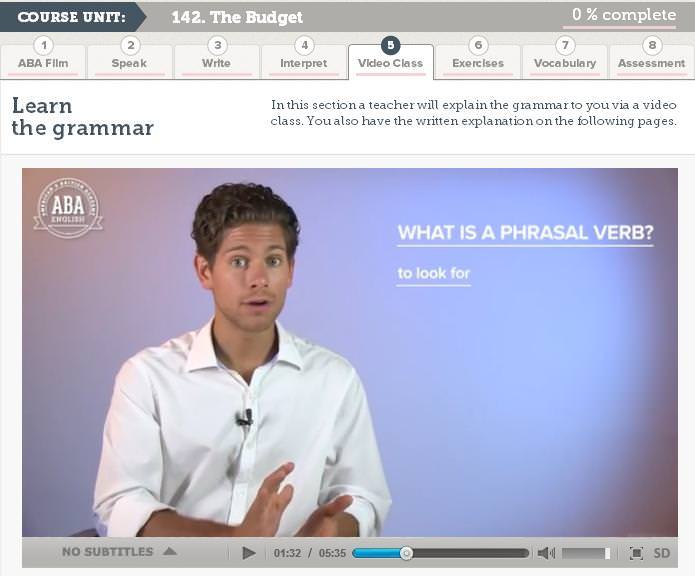Good day to one and all,
Ready for a grammar class?
The following lesson is for advanced English students. If you are not sure of your English level, take our test!
You can find all this information, plus speaking, writing, vocabulary exercises and more on the ABA English Course Unit 142 – The Budget.
Phrasal verbs part I
What is a phrasal verb? A phrasal verb is the combination of a verb and a preposition or an adverb.
Sometimes you can have more than one preposition or both an adverb and a preposition. The most important thing to remember is that combining a verb with a preposition or an adverb completely changes its meaning.
For example:
“to look” means to direct your eyes in a given direction or towards a given object.
“to look for” means to search for something or someone.
Phrasal verbs with “to look”
There are many different phrasal verbs with the verb “to look”. Let’s look at some of the most common ones:
To look after
Meaning: to take care of (someone or something).
“We’re looking after the neighbours children”
To look forward to
Meaning: to expect (something) with pleasure.
“I’m looking forward to the concert next week”
To look into
Meaning: to try to get information about (something).
“We will look into this question during the next class”
To look like
Meaning: to have an appearance that is very similar to (someone or something) : to resemble (someone or something).
“She looks like her mother”
To look out
Meaning: used to tell someone to be aware of something dangerous.
“Look out! It’s dangerous to cross the road without looking”
To look through
Meaning: to read or briefly examine some of the pages of (a book, magazine, etc.).
“I need to look through my notes before the exam”
To look up
Meaning: to search for (something) in a reference book, on the Internet, etc.
“If you don’t know the meaning of a word, look it up in the dictionary
Separable and inseparable phrasal verbs
Ok, so now we know that phrasal verbs are a combination of words. Sometimes these words can be separated, other times they cannot be separated.
Let’s see some that can be separated:
To make up
We can say “To make a story up” or “To make up a story”.
To put off
We can say “To put a meeting off” or “To put off a meeting”.
To turn off
We can say “To turn the TV off” or “To turn off the TV”.
Now, let’s see some verbs that cannot be separated:
To give in
To hold on
To come across
To deal with
To run through
Finally, there are also some phrasal verbs that can be separable or inseperable depending on their meaning or how they are used. Such as:
To take off
We cannot separate this phrasal verb when we are talking about an airplane that is starting a flight, but we can separate it when talking about the action of removing something.
Unit 142 – The Budget
Well done! You just revised the grammar from Unit 142!
In Unit 142 – The Budget, you will meet terence and Brian. Find out how Brian is preparing to plan the yearly budget.
By watching ABA Films, you will practice your listening comprehension. Record your voice and compare phrases to improve your pronunciation and gain fluency by interpreting different roles. You will also learn new vocabulary and review the unit’s grammar lesson.
Did you enjoy this class? TWEET IT OUT: I reviewed phrasal verbs with “look” with @abaenglish on their blog #esl

 ABA Journal The digital English academy
ABA Journal The digital English academy






Thanks!
Hi Abdi! Why don’t you sign up to our course? Here’s the link: http://www.abaenglish.com/en/?partnerid=5006
Welcome 🙂